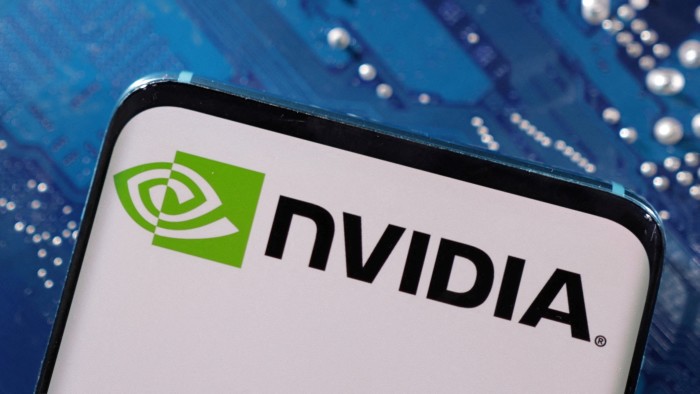Unlock the Editor’s Digest for free
Roula Khalaf, Editor of the FT, selects her favourite stories in this weekly newsletter.
Nvidia reported a nearly 70 per cent surge in quarterly revenues, beating Wall Street estimates even as the chip company suffers a big hit to its business stemming from new US restrictions on its China sales.
Nvidia on Wednesday reported revenue of $44.1bn for the quarter to April 27, up 69 per cent year on year and above Wall Street’s expectations of $43.3bn.
The US chip designer at the heart of a global spending spree on the infrastructure powering artificial intelligence said it expected revenue of $45bn for the current quarter, plus or minus 2 per cent, meaning it could come in slightly below Bloomberg consensus estimates of $45.5bn.
Nvidia shares were up more than 4 per cent in after-hours trading following the announcement.
Nvidia is navigating the impact of US President Donald Trump’s trade war with China, as well as new export restrictions in April that have prevented it from selling AI chips designed specifically for the Chinese market. Nvidia took a $4.5bn charge in the April quarter as a result of those curbs, and said it had missed out on an additional $2.5bn in sales. Its guidance for the current period reflected an expected $8bn revenue loss in China.
Chief executive Jensen Huang said the company was seeing “incredibly strong” demand for its products, but on a call with analysts he reiterated his criticism of US export controls.
“Shielding Chinese chipmakers from US competition only strengthens them abroad,” Huang said.
The company was “exploring limited ways to compete” in China, he said. Nvidia is considering whether to offer a modified version of its new Blackwell chip for the China market.
The assumption that China cannot make its own AI chips was “clearly wrong”, Huang said, and “the platform that wins the AI developers wins AI”. Nvidia’s chips run on its proprietary CUDA software, which includes vast libraries of tools for developers.
On Trump’s broader push to bring more high-end manufacturing onshore, Huang stated: “He has a vision, and I trust him.” Nvidia has committed to spending half a trillion dollars on US manufacturing over the next four years.
The company had earlier disclosed that it anticipated a $5.5bn writedown from the China restrictions, but on Wednesday it said it had been able to “re-use certain materials”, reducing the impact by about a billion dollars.
Net income jumped by 26 per cent to $18.8bn, slightly below estimates of $19.5bn.
Adjusted gross margins — a measure of profitability that excludes operating expenses and the $4.5bn April charge — were 71.3 per cent, in line with the 71 per cent Nvidia said it expected at its last earnings report in February and what Wall Street had been expecting.
Its gross margin outlook for the current quarter was slightly above estimates of 72 per cent, compared with the 71.7 per cent expected by analysts.
Nvidia’s margins slipped earlier this year with it citing the transition to its more complex and higher-cost Blackwell chip systems, which launched last year. Nvidia and its suppliers have recently resolved technical issues with Blackwell servers that threatened to delay the rollout.
Ahead of the results, analysts had warned that new China sales restrictions would bring margins down further for the quarter.
Nvidia chief financial officer Colette Kress said the company had managed to beat its own prior guidance despite a “challenging operating environment”, with the new export controls on H20 chips not providing a grace period that would allow it to sell off its existing inventory.
This month Huang has toured Saudi Arabia, the UAE and Taiwan announcing major infrastructure spending plans with so-called sovereign AI customers, reducing Nvidia’s reliance on Big Tech buyers such as Microsoft, Amazon and Meta.
Huang told analysts he would be “on the road next week through Europe” as he prepares to announce further deals, touring France, the UK, Germany and Belgium.
